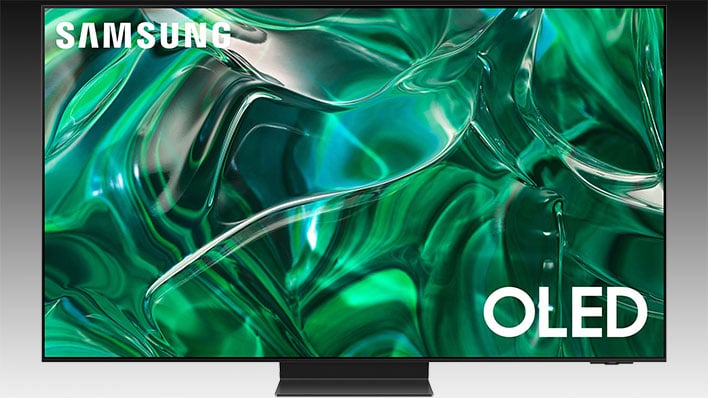LG Display Throws Shade At Samsung's OLED TVs For Burn-In Issues But Is It Justified?

It's only been around a year since Samsung expanded its robust TV lineup into OLED territory, and the added competition seems to have ruffled a few feathers at rival LG Display. All of a sudden, LG is throwing around the awful "B" word. Yes, we're talking about burn-in and according to LG, Samsung's fancy QD-OLED panels are more susceptible to permanent image retention.
Burn-in is basically just what it sounds like—it's when a persistent image gets burned into the display, leaving behind a ghostly image or shadow of that image at all times. When this happens, it's most often from static images being display, especially bright ones, like a gaming HUD or a TV channel logo. This is an inherent risk with all OLED displays.
That said, manufacturers have taken measures to mitigate the risk. Some may be better than others, and that's what LG claims. John Archer at Forbes says LG Display hastily arranged a press call earlier this week during which a company representative threw shade at Samsung.
According to Archer, the representative started off the call by touting LG's third-generation OLED panels with a new micro lens array (MLA) technology designed to boost brightness, then quickly pivoted into slamming Samsung's QD-OLED screens for their alleged higher propensity to burn-in.
The rep pointed to Rtings, a popular TV and panel review site, and specifically the outlet's ongoing long-term burn-in testing of OLED panels. The rep shared shots LG's 2022 model G2 and C2 OLED TVs next to images of Samsung's QD-OLED panels found on the Samsung's own S95B and Sony's A95K, and those sets show more image retention than LG's TVs.
According to the rep, LG's OLED TVs are less susceptible to burn-in because of the use of a white subpixel. Samsung has criticized this in the past claiming that it prevents displaying true RGB visuals, but LG says it puts less stress on the panels than the RGB subpixels in Samsung's QD-OLED panels.
That was the end of the presentation. Samsung would undoubtedly counter that testing methodology matters, and it's why Rtings recently adjusted its parameters.
"After we launched our two-year longevity test, a few users were quick to point out a major flaw in our schedule. It didn't allow Sony OLED TVs to run their compensation cycles, as Sony TVs only start this process after the TV has been off for four hours. We've adjusted our schedule to make sure this process has time to complete," Rtings says.
As Archer points out, Samsung can also highlight that its latest-generation OLED panels employ better heat management schemes and use a new HyperEfficient Electroluminescence material designed to reduce the risk of burn-in. How effective those are can't be determined with previous-generation TVs.
We'll be keeping an eye on this as time goes on to see if how the latest OLED TVs fare. Really though, micro LED (not to be confused with mini LED) can't get here fast enough (it's technically here already, but not mainstream by any stretch).

